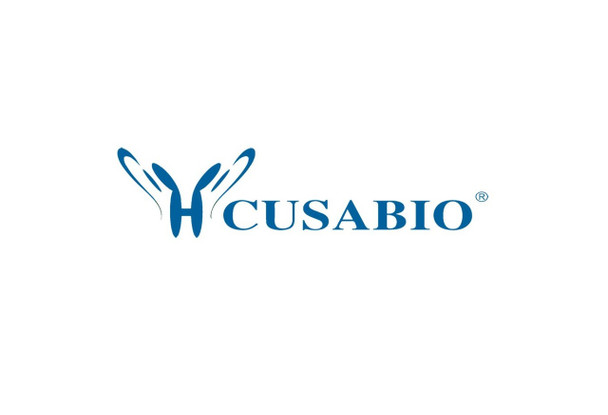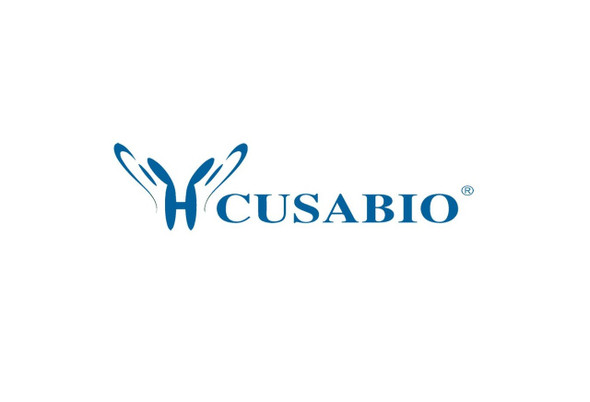Cusabio Epstein-Barr virus Recombinants
Recombinant Epstein-Barr virus Epstein-Barr nuclear antigen 2 (EBNA2), partial | CSB-YP718162EEZ(A4)
- SKU:
- CSB-YP718162EEZ(A4)
- Availability:
- 3 - 7 Working Days
Description
Recombinant Epstein-Barr virus Epstein-Barr nuclear antigen 2 (EBNA2), partial | CSB-YP718162EEZ(A4) | Cusabio
Alternative Name(s): EBNA2; BYRF1Epstein-Barr nuclear antigen 2; EBNA-2; EBV nuclear antigen 2
Gene Names: EBNA2
Research Areas: Others
Organism: Epstein-Barr virus (strain AG876) (HHV-4) (Human herpesvirus 4)
AA Sequence: SYSIPSMTLSPEPLPPPAAPAHPLPGVIYDQQALPPTPGPPWWPPVRDPTPTTQTPPTNTKQGPDQGQGRGRWRGRGRSKGRGRMHKLPEPRRPGPDTSSPSMPQLSPVVSLHQGQGPENSPTPGPSTAGPVCRVTPSATPDISPIHEPESSDSEEPPFLFPSDWYPPTLEPAELDESWEGIFETTESHSSDEENVGGPSKRPRTSTQ
Source: Yeast
Tag Info: N-terminal 6xHis-tagged and C-terminal Myc-tagged
Expression Region: 247-454aa
Sequence Info: Partial
MW: 25.9 kDa
Purity: Greater than 90% as determined by SDS-PAGE.
Relevance: Plays a key role in the activation of the host resting B-cell and stimulation of B-cell proliferation. Acts by up-regulating the expression of viral EBNA1-6, LMP1, LMP2A and LMP2B genes, as well as several host genes including CD21, CD23 and MYC. Activates transcription by acting as an adapter molecule that binds to cellular sequence-specific DNA-binding proteins such as host CBF1, SMARCB1 and SPI1. Once EBNA2 is near promoter sites, its acidic activating domain recruits basal and activation-associated transcription factors TFIIB, TAF40, TFIIH components ERCC2 and ERCC3, and CBP in order to promote transcription. Alternatively, EBNA2 can affect activities of cell cycle regulators and retard cell cycle progression at G2/M phase. It also induces chromosomal instability, by disrupting mitotic checkpoints, multi-nucleation and formation of micronuclei in infected cells (By similarity).
Reference: "U2 region of Epstein-Barr virus DNA may encode Epstein-Barr nuclear antigen 2."Dambaugh T., Hennessy K., Chamnankit L., Kieff E.Proc. Natl. Acad. Sci. U.S.A. 81:7632-7636(1984)
Storage: The shelf life is related to many factors, storage state, buffer ingredients, storage temperature and the stability of the protein itself. Generally, the shelf life of liquid form is 6 months at -20?/-80?. The shelf life of lyophilized form is 12 months at -20?/-80?.
Notes: Repeated freezing and thawing is not recommended. Store working aliquots at 4? for up to one week.
Function: Plays a key role in the activation of the host resting B-cell and stimulation of B-cell proliferation. Acts by up-regulating the expression of viral EBNA1-6, LMP1, LMP2A and LMP2B genes, as well as several host genes including CD21, CD23 and MYC. Activates transcription by acting as an adapter molecule that binds to cellular sequence-specific DNA-binding proteins such as host CBF1, SMARCB1 and SPI1. Once EBNA2 is near promoter sites, its acidic activating domain recruits basal and activation-associated transcription factors TFIIB, TAF40, TFIIH components ERCC2 and ERCC3, and CBP in order to promote transcription. Alternatively, EBNA2 can affect activities of cell cycle regulators and retard cell cycle progression at G2/M phase. It also induces chromosomal instability, by disrupting mitotic checkpoints, multi-nucleation and formation of micronuclei in infected cells (By similarity).
Involvement in disease:
Subcellular Location: Host nucleus matrix
Protein Families: Herpesviridae EBNA2 family
Tissue Specificity:
Paythway:
Form: Liquid or Lyophilized powder
Buffer: If the delivery form is liquid, the default storage buffer is Tris/PBS-based buffer, 5%-50% glycerol. If the delivery form is lyophilized powder, the buffer before lyophilization is Tris/PBS-based buffer, 6% Trehalose, pH 8.0.
Reconstitution: We recommend that this vial be briefly centrifuged prior to opening to bring the contents to the bottom. Please reconstitute protein in deionized sterile water to a concentration of 0.1-1.0 mg/mL.We recommend to add 5-50% of glycerol (final concentration) and aliquot for long-term storage at -20?/-80?. Our default final concentration of glycerol is 50%. Customers could use it as reference.
Uniprot ID: Q69022
HGNC Database Link: N/A
UniGene Database Link: N/A
KEGG Database Link: KEGG
STRING Database Link: N/A
OMIM Database Link: N/A






